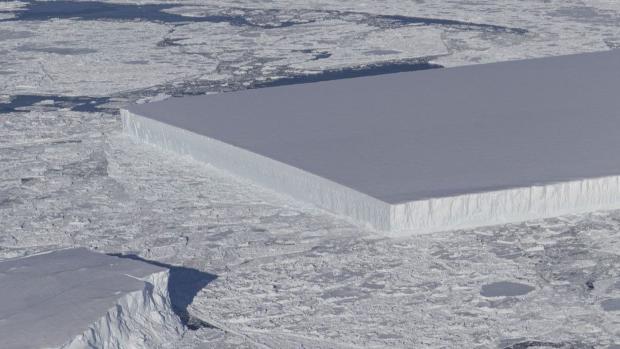
The Icecube in Antartica
NASA shared a photo last Wednesday of a slab of ice- perfectly rectangular floating on the Antarctic. Is this climate change or just plain unnatural?
An excerpt from LA times tells us what we need to know about how the iceberg was formed:
Experts say they believe the iceberg fractured in May from Larsen C, a large ice shelf fed by several glaciers on the east side of the peninsula. They're still unsure whether it will cause the rest of the shelf to destabilize.
"Ice shelves release large icebergs from time to time. They do this naturally," said Christopher Shuman, a research scientist at the University of Maryland Baltimore County's Joint Center for Earth Systems Technology at NASA. It means that the ice shelf is changing, which is not surprising given the changes scientists have seen nearby, he said.
Larsen A, an ice shelf farther north on the peninsula, broke up in 1995. Larsen B broke up in 2002. Larsen C itself calved an even larger iceberg in 1986, Shuman said. It was recorded at 2,780 square miles — larger than Maryland — until last July, when it calved an iceberg the size of Delaware, known as A-68.
The rectangular iceberg, photographed as part of a topographic mapping project tracking changes in polar ice shelves called Operation Ice Bridge, fractured in May after A-68 crashed into Bawden, a rocky ice-covered island in the northwest, and created several small berg fragments.
"This is not good news for the Larsen C in a general sense," Shuman said. But the iceberg could continue to be resupplied with ice from land-based glaciers, as it was after the bigger iceberg broke up in 1986.
A larger problem, Shuman said, is that the ice front is as far west as it's ever been, based on satellite imagery. "The fact that the edge is so far west is not a good sign; Larsen A and Larsen B broke up just up the peninsula," he said.
National Snow and Ice Data Center research scientist Twila Moon said it's unsurprising that the iceberg fractured in straight lines. That's consistent with an iceberg calved from floating ice in that region, she said. Ice is a mineral; it has a crystal-like structure and breaks the way a shard of glass would.
"When a piece of glacial ice is in contact with the ocean floor, the interference at the base causes it to calve off differently, creating misshaped icebergs," Moon explained. When an iceberg breaks off from a shelf of floating ice like Larsen C, there's no friction controlling how it breaks up.
"That's when large tabular icebergs form," which differ in shape from bulky and pointed non-tabular icebergs, she said.
Shuman said the shape is not surprising, though it's unusual to see such sharp angles."
Why is this important news? For anyone that has been following our blog- they know that we’re about paperless forms and all things paperless- but we’re doing this because we don’t only care about paperless solutions for businesses but also about our environment and climate- so anything of significance that happens on planet earth is SignTech’s concern. Awareness on what’s happening helps us make better decisions on how to better protect our planet. With that some tips on how to help the planet- water, electricity, plastic, everything you use in your everyday life- these are things that we use with little regard on how to conserve it simple steps are:
- Turn off lights when you’re not using them
- Keep your showers short
- Reuse plastic baags as dustbins
- Commute to work using public transport, walking, cycling
SignTech Forms is an innovative paperless platform that converts existing forms and documents into paperless forms that can be completed on mobile devices and electronically signed seamlessly (with full data integration). For more information visit www.signtechforms.com or email expert@signtechforms.com.
img source: An image from an Operation IceBridge flight over Antarctica shows a tabular iceberg floating among sea ice just off of the Larsen C ice shelf on Oct. 16. (NASA)


